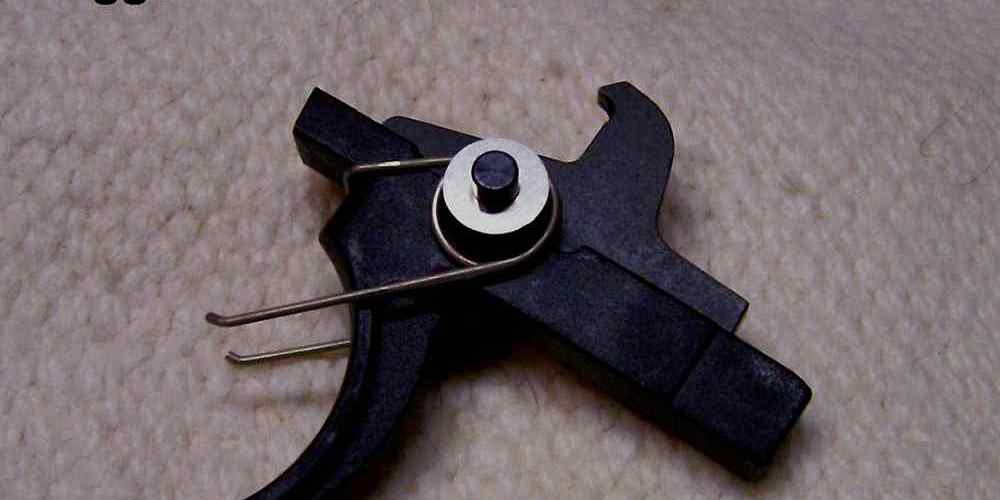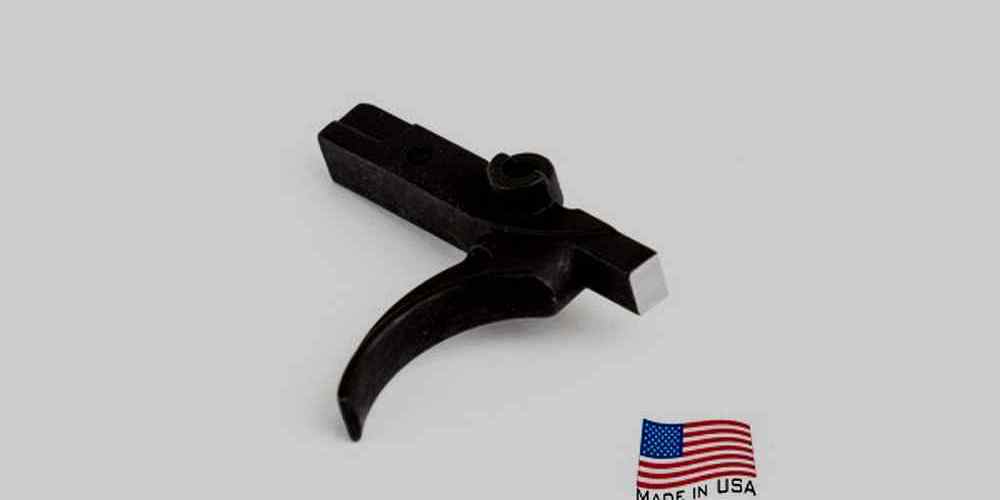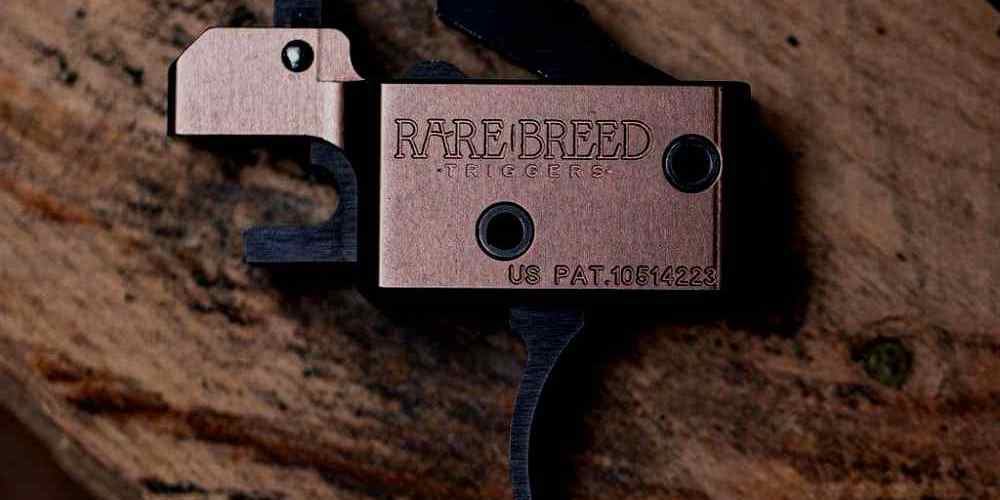“AR15 Trigger Maintenance: Ensuring Precision Performance Every Shot”
Importance of Regular Trigger Maintenance for AR15 Rifles
The AR15 rifle is a popular choice among gun enthusiasts for its versatility, accuracy, and ease of customization. However, like any mechanical device, it requires regular maintenance to ensure optimal performance. One often-overlooked aspect of AR15 maintenance is the trigger. The trigger is a critical component of the rifle, as it is responsible for firing the weapon. Neglecting trigger maintenance can lead to malfunctions, misfires, and even safety hazards. In this article, we will discuss the importance of regular trigger maintenance for AR15 rifles and provide some tips on how to keep your trigger in peak condition.
One of the main reasons why trigger maintenance is so important is that a dirty or worn trigger can affect the rifle’s accuracy and reliability. Over time, dirt, debris, and carbon buildup can accumulate in the trigger mechanism, causing it to become sticky or sluggish. This can result in a gritty or inconsistent trigger pull, which can throw off your aim and make it difficult to shoot accurately. In extreme cases, a dirty trigger can even cause the rifle to malfunction or fail to fire altogether.
Regular trigger maintenance can help prevent these issues and ensure that your AR15 rifle performs at its best. Cleaning the trigger mechanism regularly with a solvent and lubricating it with a high-quality gun oil can help keep it smooth and responsive. It is also important to inspect the trigger components for signs of wear or damage, such as worn springs or broken parts. Replacing any worn or damaged parts promptly can help prevent more serious problems down the line.
In addition to cleaning and inspecting the trigger mechanism, it is also important to test the trigger regularly to ensure that it is functioning properly. A simple function check can help you identify any issues with the trigger, such as a failure to reset or a weak trigger pull. If you notice any problems during the function check, it is important to address them promptly to prevent further damage to the trigger or the rifle.
Another reason why trigger maintenance is important is that a well-maintained trigger can improve your shooting performance. A clean, smooth trigger with a consistent pull weight can help you shoot more accurately and confidently. It can also help you shoot faster and more efficiently, as you won’t have to worry about a sticky or unreliable trigger slowing you down. By taking the time to maintain your trigger regularly, you can ensure that your AR15 rifle is always ready to perform at its best.
In conclusion, regular trigger maintenance is essential for keeping your AR15 rifle in peak condition. By cleaning, inspecting, and testing the trigger regularly, you can prevent malfunctions, improve accuracy, and enhance your shooting performance. Remember to use high-quality cleaning products and lubricants, and always follow the manufacturer’s recommendations for maintenance. With proper care and attention, your AR15 rifle’s trigger will continue to serve you well for years to come.
Step-by-Step Guide to Cleaning and Lubricating Your AR15 Trigger
The AR15 is a popular rifle among gun enthusiasts for its accuracy, reliability, and customization options. To keep your AR15 in peak condition, it’s important to regularly clean and lubricate the trigger mechanism. Neglecting this crucial maintenance can lead to malfunctions and decreased performance. In this article, we will provide you with a step-by-step guide on how to properly clean and lubricate your AR15 trigger.
First, ensure that your rifle is unloaded and the magazine is removed. Safety should always be your top priority when handling firearms. Once you have confirmed that the rifle is safe, you can begin disassembling the trigger mechanism. Start by removing the pins that hold the trigger assembly in place. Use a punch and hammer to gently tap out the pins, being careful not to damage the receiver.

Once the trigger assembly is removed, inspect it for any dirt, debris, or corrosion. Use a brush and solvent to clean the trigger, sear, and hammer surfaces. Pay close attention to the contact points where the parts interact, as any buildup in these areas can affect the trigger pull and overall performance of the rifle. After cleaning, dry the parts thoroughly with a clean cloth.
Next, it’s time to lubricate the trigger mechanism. Apply a small amount of high-quality gun oil to the contact points of the trigger, sear, and hammer. Be sure not to over-lubricate, as excess oil can attract dirt and grime, leading to potential malfunctions. Use a cotton swab or small brush to evenly distribute the oil on the surfaces.
Reassemble the trigger mechanism by inserting the pins back into place. Use a punch and hammer to secure the pins, ensuring that they are flush with the receiver. Test the trigger pull to ensure that it is smooth and consistent. If you notice any grittiness or resistance, disassemble the trigger mechanism again and repeat the cleaning and lubrication process.
Once you are satisfied with the trigger’s performance, reassemble the rifle and perform a function check to ensure that everything is in working order. Dry fire the rifle several times to test the trigger pull and reset. If you encounter any issues, disassemble the trigger mechanism and inspect for any missed areas during cleaning.
Regular maintenance of your AR15 trigger is essential to keep your rifle functioning at its best. By following this step-by-step guide, you can ensure that your trigger is clean, lubricated, and performing optimally. Remember to always practice safe handling procedures when working on firearms and consult the manufacturer’s guidelines for specific maintenance instructions.
In conclusion, proper maintenance of your AR15 trigger is crucial for keeping your rifle in peak condition. By regularly cleaning and lubricating the trigger mechanism, you can ensure smooth operation and reliable performance. Follow the steps outlined in this guide to maintain your AR15 trigger and enjoy shooting with confidence.
Common Issues with AR15 Triggers and How to Fix Them
The AR15 is a popular rifle among gun enthusiasts for its versatility and reliability. However, like any mechanical device, it requires regular maintenance to ensure it functions properly. One of the key components of the AR15 is the trigger, which is responsible for firing the rifle. Over time, triggers can become dirty or worn, leading to issues such as misfires or failure to reset. In this article, we will discuss some common issues with AR15 triggers and how to fix them to keep your rifle in peak condition.
One of the most common issues with AR15 triggers is a gritty or rough feel when pulling the trigger. This can be caused by dirt, debris, or corrosion building up on the trigger components. To fix this issue, you will need to disassemble the trigger assembly and clean all the parts thoroughly. Use a solvent and a brush to remove any dirt or debris, and then lubricate the moving parts with a light gun oil. This should help smooth out the trigger pull and improve the overall feel of the trigger.
Another common issue with AR15 triggers is a failure to reset after firing. This can be caused by a weak or broken trigger spring, or by dirt and debris preventing the trigger from resetting properly. To fix this issue, you will need to inspect the trigger spring for any signs of wear or damage. If the spring is damaged, you will need to replace it with a new one. You should also clean the trigger assembly to remove any dirt or debris that may be preventing the trigger from resetting. Once you have replaced the spring and cleaned the trigger assembly, test the trigger to ensure it resets properly.
One issue that can be particularly frustrating for AR15 owners is a trigger that feels spongy or has excessive creep. This can be caused by a worn or damaged trigger sear, which is the part of the trigger that engages with the hammer to release it. To fix this issue, you will need to disassemble the trigger assembly and inspect the trigger sear for any signs of wear or damage. If the sear is worn or damaged, you will need to replace it with a new one. You should also clean the trigger assembly to remove any dirt or debris that may be affecting the trigger’s performance. Once you have replaced the sear and cleaned the trigger assembly, test the trigger to ensure it feels crisp and has minimal creep.
In conclusion, regular maintenance of your AR15 trigger is essential to keep your rifle in peak condition. By addressing common issues such as a gritty trigger pull, failure to reset, or spongy trigger feel, you can ensure that your rifle functions properly when you need it most. Remember to clean and lubricate your trigger regularly, and inspect it for any signs of wear or damage. With proper maintenance, your AR15 trigger will provide you with years of reliable service.
Upgrading Your AR15 Trigger for Improved Performance
If you own an AR15 rifle, you know how important it is to keep it in peak condition for optimal performance. One key component of your AR15 that can greatly affect its performance is the trigger. The trigger is what allows you to fire your rifle, so it’s crucial to ensure that it is functioning properly at all times. In this article, we will discuss the importance of AR15 trigger maintenance and how upgrading your trigger can improve the overall performance of your rifle.
Regular maintenance of your AR15 trigger is essential to ensure that it functions properly and reliably. Over time, dirt, debris, and carbon buildup can accumulate in the trigger mechanism, causing it to become sluggish or even fail. By regularly cleaning and lubricating your trigger, you can prevent these issues and keep your rifle in top condition.
To clean your AR15 trigger, start by removing the lower receiver from the rifle. Use a small brush and some gun cleaner to scrub away any dirt or debris that may have accumulated in the trigger mechanism. Be sure to pay special attention to the sear and hammer surfaces, as these are the parts of the trigger that are most prone to wear and tear.
Once you have cleaned the trigger mechanism, apply a small amount of gun oil to lubricate the moving parts. This will help ensure that the trigger operates smoothly and reliably. Be sure to wipe away any excess oil to prevent it from attracting dirt and debris.
In addition to regular cleaning and lubrication, upgrading your AR15 trigger can also improve the overall performance of your rifle. Aftermarket triggers are available that offer lighter pull weights, crisper breaks, and reduced trigger travel, all of which can help you shoot more accurately and quickly.
When choosing an aftermarket trigger for your AR15, consider factors such as pull weight, trigger shape, and adjustability. Some triggers offer adjustable pull weights, allowing you to customize the trigger to your preferences. Others feature different trigger shapes, such as flat-faced or curved triggers, which can affect how the trigger feels when pulled.
Installing an aftermarket trigger in your AR15 is a relatively simple process that can be done at home with basic tools. However, if you are not comfortable working on your rifle, it is always best to have a professional gunsmith install the trigger for you.
Once you have upgraded your AR15 trigger, be sure to test it at the range to ensure that it functions properly. Pay attention to how the trigger feels when pulled, as well as how it affects your shooting accuracy. If you experience any issues, such as light primer strikes or failure to reset, consult with a gunsmith to diagnose and fix the problem.
In conclusion, regular maintenance of your AR15 trigger is essential to keep your rifle in peak condition. By cleaning and lubricating your trigger regularly, you can prevent malfunctions and ensure reliable performance. Additionally, upgrading your trigger can improve the overall performance of your rifle, making you a more accurate and efficient shooter. So take care of your AR15 trigger, and enjoy improved performance on the range.
Tips for Extending the Lifespan of Your AR15 Trigger System
The AR15 is a popular rifle among gun enthusiasts for its accuracy, reliability, and customization options. One key component of the AR15 that is often overlooked when it comes to maintenance is the trigger system. The trigger is a critical part of the rifle that can greatly affect accuracy and performance. By properly maintaining your AR15 trigger system, you can ensure that your rifle remains in peak condition for years to come.
One of the most important aspects of AR15 trigger maintenance is keeping it clean. Over time, dirt, debris, and carbon buildup can accumulate in the trigger mechanism, causing it to become sluggish or even malfunction. To prevent this, it is important to regularly clean your trigger system using a cleaning solvent and a brush. Be sure to remove all traces of solvent and lubricate the trigger components with a high-quality gun oil to keep them functioning smoothly.
In addition to cleaning, it is also important to regularly inspect your trigger system for any signs of wear or damage. Check for any cracks, chips, or other abnormalities in the trigger components that could affect performance. If you notice any issues, it is best to replace the damaged parts immediately to prevent further damage to the trigger system.
Another important aspect of AR15 trigger maintenance is adjusting the trigger pull weight. The trigger pull weight refers to the amount of force required to pull the trigger and fire the rifle. A lighter trigger pull weight can improve accuracy and make shooting more comfortable, while a heavier trigger pull weight can improve safety by reducing the risk of accidental discharges. To adjust the trigger pull weight, consult your rifle’s manual or seek the assistance of a professional gunsmith.
It is also important to regularly test your trigger system to ensure that it is functioning properly. Dry firing your rifle can help you identify any issues with the trigger mechanism, such as a gritty or inconsistent trigger pull. If you notice any problems, it is best to address them immediately to prevent further damage to the trigger system.
In addition to regular maintenance, there are also some tips for extending the lifespan of your AR15 trigger system. One tip is to avoid using cheap or low-quality ammunition, as this can cause excessive wear on the trigger components. It is also important to store your rifle in a cool, dry place to prevent rust and corrosion from forming on the trigger system.
By following these tips for AR15 trigger maintenance, you can keep your rifle in peak condition and ensure that it performs reliably and accurately for years to come. Remember to clean, inspect, adjust, and test your trigger system regularly to prevent issues and maintain optimal performance. With proper care and maintenance, your AR15 trigger system will continue to serve you well on the range or in the field.







